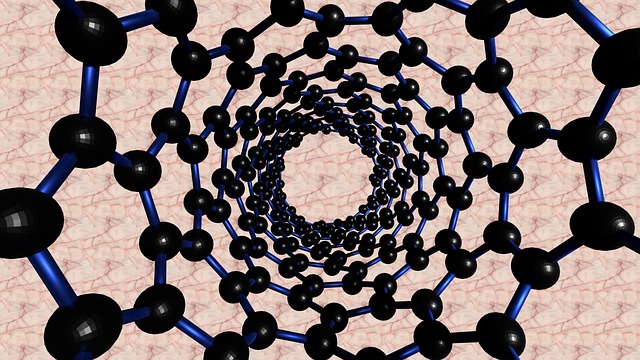Super fast ion tunnel
 We live in a modern world full of devices that run on electricity. The development of new technologies ensures that cell phones, laptops, tablets and many other mobile devices are with us every step of the way. Lithium-ion batteries, so-called Li-ion rechargeable batteries, are most commonly used for powering mobile devices, but due to their slow charging, short service life and environmental pollution (due to the high content of heavy metals, e.g. cobalt), more and more attention is being paid to Super capacitors directed. These are devices that have properties of Batteries and capacitors combine. What is it related to? Longer service life, easier recycling and, above all, faster charging, which means time savings. After all, time is money.
We live in a modern world full of devices that run on electricity. The development of new technologies ensures that cell phones, laptops, tablets and many other mobile devices are with us every step of the way. Lithium-ion batteries, so-called Li-ion rechargeable batteries, are most commonly used for powering mobile devices, but due to their slow charging, short service life and environmental pollution (due to the high content of heavy metals, e.g. cobalt), more and more attention is being paid to Super capacitors directed. These are devices that have properties of Batteries and capacitors combine. What is it related to? Longer service life, easier recycling and, above all, faster charging, which means time savings. After all, time is money.
Image source: Pixabay
The advantages of the Super capacitors lie in their structure, which consists of two basic elements. The first is a system of two highly porous electrodes separated from each other by a porous material that protects them from short circuits. Most often, this part of the supercapacitor is made on the basis of activated carbon, which is used in these devices for a reason. In its pores is the second key component of the supercapacitor - the electrolyte, which contains ions, that is, atoms endowed with an electrical charge (positively charged - cations and negatively charged - anions). Depending on the voltage applied between the electrodes, the ions can move within the porous material. Interestingly, so can more energy stored in the device, the more pores there are inside the electrodes. If you disregard components like the case, etc., you could say that's it.
But what makes supercapacitors so promising Save energy? These are the pores mentioned earlier and the way the ions move. The diameter and length of the channels inside the porous electrodes is crucial. If the pores are wide, the device charges quickly, but delivers little energy, whereas if the diameter is reduced, more energy can be delivered, but the device charges much more slowly. So is there any way to accelerate ions in narrow pores? Svyatoslaw Kondrat, scientist at the Institute of Physical Chemistry of the Polish Academy of Sciences (IPC PAS), wrote about this in the November issue of the journal Nature Communications.
The authors of the research used a porous material Carbon-based with a pore diameter of less than a nanometer, whereby it should be noted that 1 nm is one billionth of a meter. These pores are therefore so small that they cannot be seen by the human eye. The material was soaked in an ionic liquid, which is nothing more than a salt in a liquid state, but does not contain a solvent such as water. The ionic liquid is therefore a liquefied salt. The ions from the ionic liquid fill the pores and when a voltage is applied between the electrodes, they begin to move. But what happens if the polarization lasts longer? Are all ions moving at the same speed? Unfortunately, the ions inside the electrodes behave like cars in a tunnel, moving in opposite directions. In addition, each of them moves in one lane, not several like on a highway. If even one car gets stuck, the others start to brake. This reduces the capacity of the tunnel and a traffic jam forms. The same thing happens with the pores that are in the supercapacitor clog in places. This leads to a reduction in the efficiency of the device, in particular to a Shortening the loading time.
How can you avoid that? Svyatoslav Kondrat tested this in collaboration with an international team pulsed Applying voltage to the supercapacitor to gradually set the ions in motion and not clog the pores. As it turned out, it was a hit. The method proposed by the scientists speeds up the process of charging the device and gives promising results. In addition, these scientists did tests for the process of discharge demonstrated that this process can also be accelerated. The experiments carried out coincide with numerous Computer simulationsthat the scientists did. The results of our research are promising. What is interesting is that it is possible not just to charge the process Super capacitor to speed up, but also its discharge. This enables us to improve various technological processes, for example accelerate water desalination and make it more efficient, "says Svyatoslav Kondrat. The solution proposed by the researchers opens up new possibilities and enables us to improve existing solutions for the Power Supply mobile devices closer. Although capacitors have been around for decades, they are Super capacitorsthat meet the expectations of today's consumers. Thanks to such discoveries, we are developing faster and more efficiently energy storage and that is only the beginning of the revolution in this area.